Search
Search Results
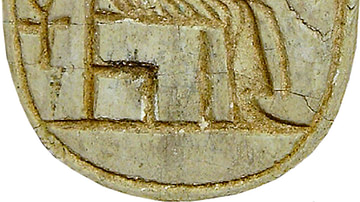
Article
The Egyptian Amulet: Pious Symbols of Spiritual Life
Material Objects & Cultures Material objects convey volumes about the people who possessed them. Cultures and societies in every generation are in part classified - either correctly or incorrectly - by the objects or symbols they select...
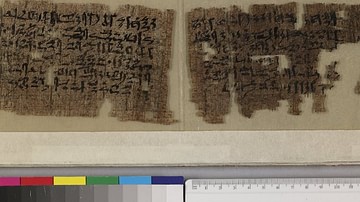
Article
The Tale of Sinuhe
The Middle Kingdom of ancient Egypt (2000 BCE – 1700 BCE) saw the start of more formal writing which included religious scripts, administrative notes, and more in-depth fictional writing. One of the most iconic pieces of writing to come out...

Article
Cosmetics in the Ancient World
The wearing of cosmetics and perfumes by both men and women goes back a very long way indeed as the ancients were just as keen as anyone to improve their appearance as quickly and as easily as possible using all manner of powders, creams...
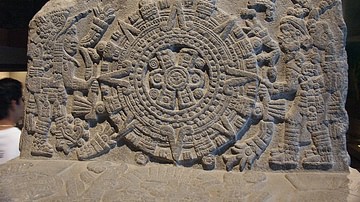
Article
The Aztec New Fire Ceremony
The New Fire Ceremony, also known as the Binding of the Years Ceremony, was a ritual held every 52 years in the month of November on the completion of a full cycle of the Aztec solar year (xiuhmopilli). The purpose of it was none other than...

Image
Egyptian Stela of Horemheb
Only this fragment from the top of a round topped limestone stela has survived. There are 3 columns of hieroglyphic inscriptions; these state that the stela was "made by the guardian of king's provisions of the Lord of the Two Lands Horemheb"...

Image
Rosetta Stone
The Rosetta Stone is an incomplete grey and pink granodiorite stela dating from 196 BCE which presents a priestly decree concerning King Ptolemy V of Egypt. The text is in three different versions: Hieroglyphic, Demotic and Greek. The stone...

Image
Egyptian Door Jamb
Limestone fragment of a door jamb from the temple of Seth (built by the Egyptian pharaoh Thutmose III) at Ombos (Naqada), Egypt, 18th Dynasty, 1543-1292 BCE. The Petrie Museum of Egyptian Archaeology, London (With thanks to The Petrie Museum...
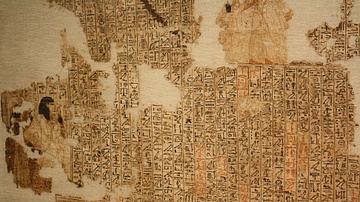
Image
Egyptian Book of the Dead, Pashed Script
A portion of an Egyptian Book of the Dead in the hieroglyphic cursive script of Pashed. Papyrus. XVIII-XIX Dynasty. (Archaeological Museum, Milan, Italy)

Image
Fragment from pyramid of king Pepi I
This limestone block fragment came from the debris of the north wall of the antechamber within the pyramid of king Pepi (Pepy) I at Saqqara. The fragment contains 5 vertical columns of green-filled hieroglyphic inscriptions. The cartouche...
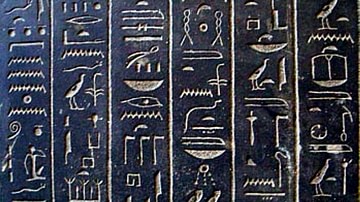
Image
Detail from the Sarcophagus of Ankhnesneferibre
Egyptian hieroglyphs carved on the sarcophagus of Ankhnesneferibre (26th dynasty), currently located in the British Museum.